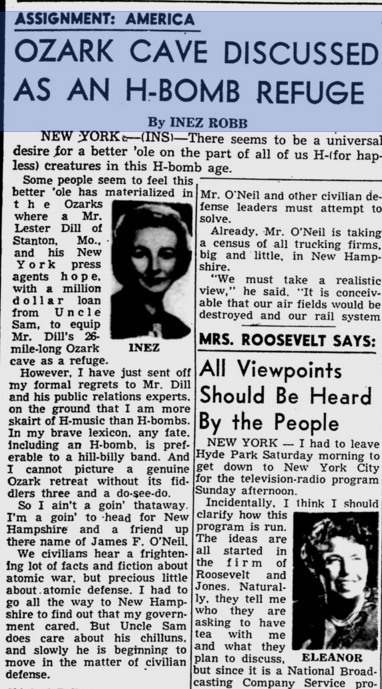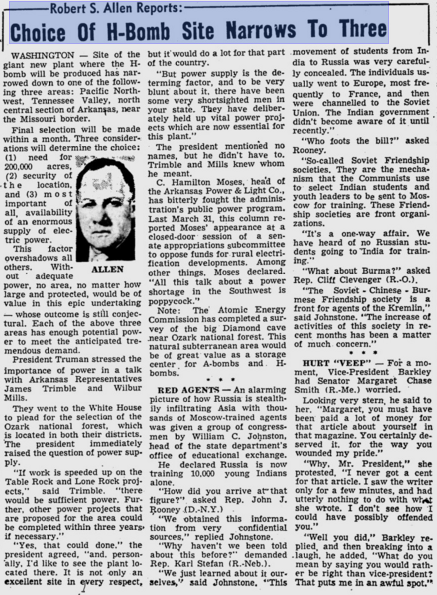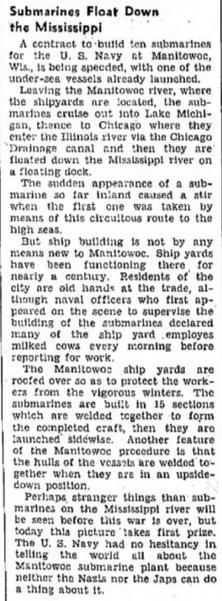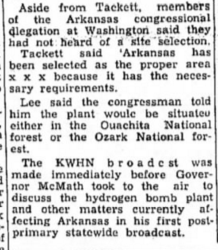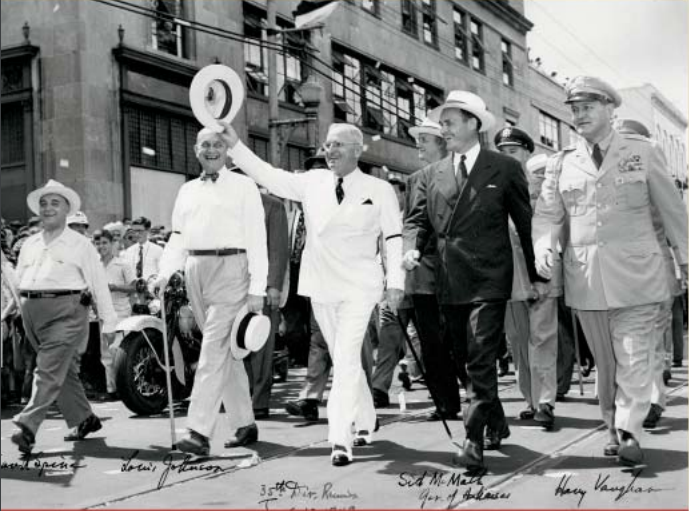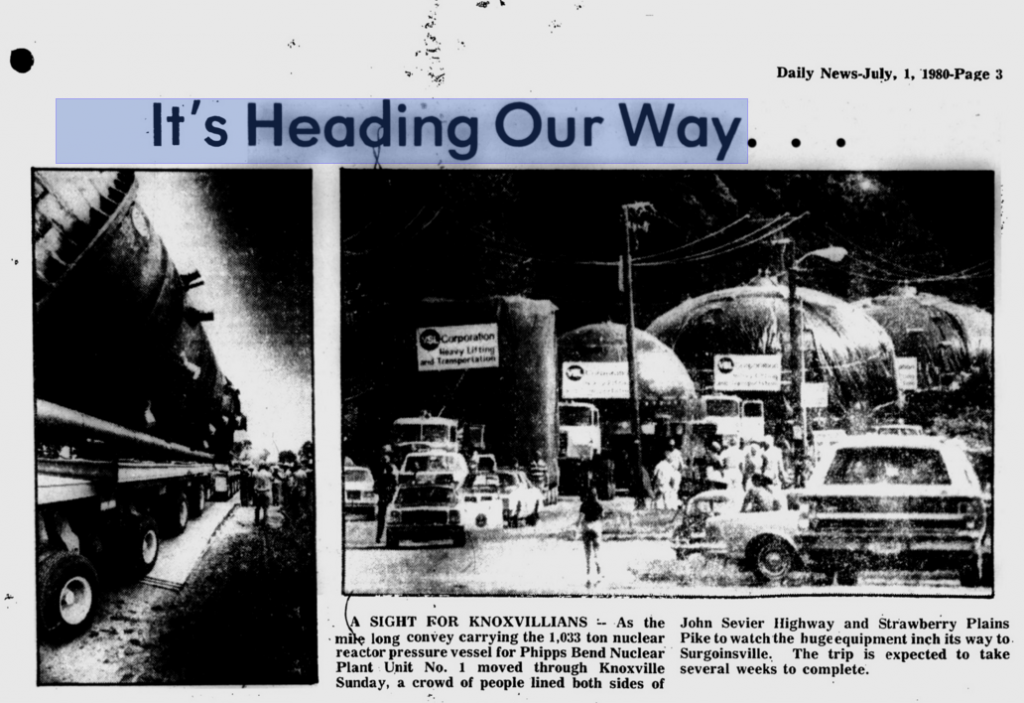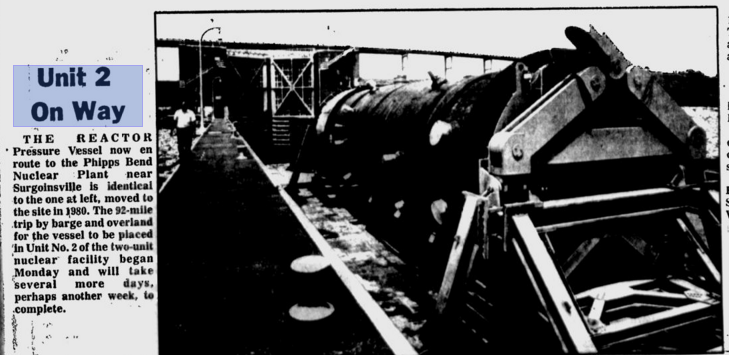2nd Missing Phipps Bend NUCLEAR Reactor Pressure Vessel’s Last Known Location: Memphis, TN
Documents indicate Chicago Bridge and Iron Nuclear fabricated the two massive reactor pressure vessels in Memphis Tennessee. Unit 1 traveled by barge to Knoxville, where it continued on to Phipps Bend in a slow, widely publicized procession. There is video as well as photographic evidence of this event.(1)
We have no proof Unit 2 ever arrived to Phipps Bend.
Other nuclear reactor pressure vessels have travelled less conspicuously by water, not using overland transportation. The Journal News of White Plains New York reported a similar vessel travelled by ship to New Hampshire’s Seabrook nuclear plant. No roads were closed. No powerlines raised. No bridges reinforced. No traffic diverted. No miles of onlookers to gape at the monstrosity as it crawled slowly down the road.(2)
Let’s go back to the last known location of this missing reactor pressure vessel. Unit 2 was being built at North America’s largest waterway- the Mississippi River. The Arkansas River is a major tributary of the Mississippi, and just as easily traversable by barge. The Arkansas River leads straight to the Ozarks and the Ozark National Forest, where there were numerous reports the federal government was building an H-bomb plant there.
The underground topography in the Ozark area is quite similar to that of northeast Tennessee, southwest Virginia, and southeast Kentucky. Karst/limestone landforms, especially caves, many large and miles long, are abundant in the Ozarks.
Consider the following article written by Inez Robb for Assignment America:
There seems to be a universal desire for a better ‘ole [hole] on the part of all us H-(for hapless) creatures in this H-bomb age.
Some people seem to feel this ‘ole has materialized in the Ozarks where a Mr. Lester Dill of Stanton, Mo. and his New York press agents hope, with a million dollar loan from Uncle Sam, to equip Mr. Dill’s 26-mile-long Ozark cave as a refuge.(3)
Another editorial, Our Daily Bread, opines:
Anyone who went through the construction period on the Southwestern Proving Ground here isn’t going to have much stomach for another war plant–however much the state is intrigued by published reports that the government is considering establishing the proposed Hydrogen Bomb plant in the Ozarks.
None of us laymen know a thing about either the Atom or Hydrogen bombs except that the one is an accomplished terror and the other offers promise of being a greater terror yet to come. That’s why they are talking about a location in the Ozarks–there are plenty of caves up there, and caves would be useful in handling a dangerous manufacturing and storage operation such as the hydrogen bomb plant. (4)
Of course, other sites were also in the running for this proposed H-bomb plant. It seemed that power generation for the proposed Ozark site was a concern to President Truman:
President Truman told Arkansas congressmen James Trimble and Wilbur Mills plainly:
…power supply is the determining factor, and to be very blunt about it, there have been some very shortsighted men in your state. They have deliberately held up vital power projects which are now essential for this plant.(5)
By 1952, President Truman was dedicating and touring two new hydroelectric dams in Ozark territory in Northern Arkansas. It would seem any concern with lack of sufficient power for the plant had been more than addressed.(6)
Just as I theorized the official announcement they had chose Alabama as the site for the nation’s future nitrate plant was disinformation to direct attention away from a secret facility at Cumberland Gap, so I wonder if the final announcement that South Carolina would get the H-bomb plant was also disinformation, intended to protect a secret facility located deep in the Ozarks?
TVA Says the Department of Defense Should Help Fund Phipps Bend’s Construction
From The Tennessean, July of 1981:
TVA leader [Charles] Dean said recently he believed the Defense Department should help fund construction of the nuclear plants so the power could [be] used to build atomic submarines.(7)
Did the 2nd missing Phipps Bend RPV ultimately become part of a secret nuclear submarine facility somewhere in northern Arkansas?
I interviewed a former worker for Chicago Bridge and Iron Nuclear, and he confirmed the second vessel was never shipped to Phipps Bend. He thinks it may have been cut up for scrap, but he cannot say for sure. He said at the time, several RPVs were being stored on site in Memphis.(9)
I followed the footsteps of a second Chicago Bridge and Iron Nuclear worker, whose specialty was reactor pressure vessels. One year after the completion of the second Phipps Bend RPV, he left CB&I to perform inspections on a new power plant construction (1982). The name of the plant is not indicated. Then for the next thirty years he is a senior project manager with a large, worldwide nuclear services outfit. The only problem is, this nuclear outfit has no facilities anywhere near this gentleman’s home base: Jonesboro, Arkansas. Jonesboro is approximately 60 miles from the Ozarks.
Interestingly, I found several career listings in Bay, Arkansas, for mechanics to support nuclear weapons security missions. Even though the jobs are listed under Arkansas (not far from Jonesboro), it indicates applicants will be at the Naval Submarine Base Kings Bay, Georgia. The company behind the job listings does not appear to have any facilities in the Bay, Arkansas area. So why are the jobs listed geographically for the Ozark region?
Consider the following newspaper article from May of 1942:
In July 1951, Congress authorized the first nuclear submarine to be built.
There was already a naval submarine plant accessible to the Mississippi River in Manitowoc, Wisconsin.(8)
Could the Mississippi River and the Ozarks be part of a production line for the construction of naval nuclear submarines? Compartmentalization is key to the success of government defense programs. 1.) Construct the submarines at one location. 2.) Build their power supplies at another. 3.)Store/produce weaponry at another location 4.)The submarine travels down the production line until completed and ultimately sent to its destination.
The idea that there is a supply chain across the eastern United States for our nuclear naval submarines was first presented to me by a colleague. I cannot claim credit for this theory. This colleague went through great hardship attempting to ascertain the truth; understandably, he may not want to return to this research. But he does deserve recognition for this theory, even if I cannot identify him by name. Thank you, W, and I’m very sorry for what you went through.
(1) “Outdoors” by Mark Aldeen. Daily News. March 18, 1977.
(2) “Atomic power protest ends in 180 arrests.” The Journal News. March 10, 1979.
(3) “Ozark cave discussed as an H-Bomb refuge.” St. Petersburg Times. March 22, 1950.
(4) “Our Daily Bread.” Alex Washburn, editor. Hope Star. August 19, 1950.
(5) “Choice of H-Bomb site narrows to three.” The Evening Independent. August 16, 1950.
(6) “Presidential Pathways.” arkansas.com.
http://www.arkansas.com/!userfiles/presidential_pathways.pdf
(7) “TVA stall in curbing N-program reported costing $2-$4 billion.” The Tennessean. July 31, 1981.
(8) “Submarines Float Down the Mississippi.” The Montana Standard. May 28, 1942.
(9) Personal phone conversation. Source identity protected. May 17, 2016.
